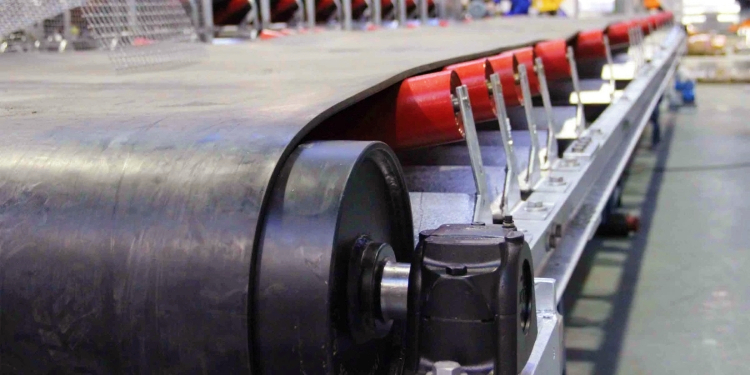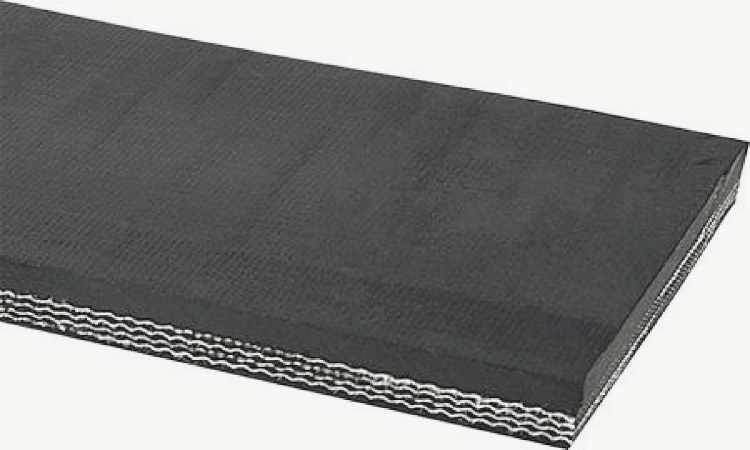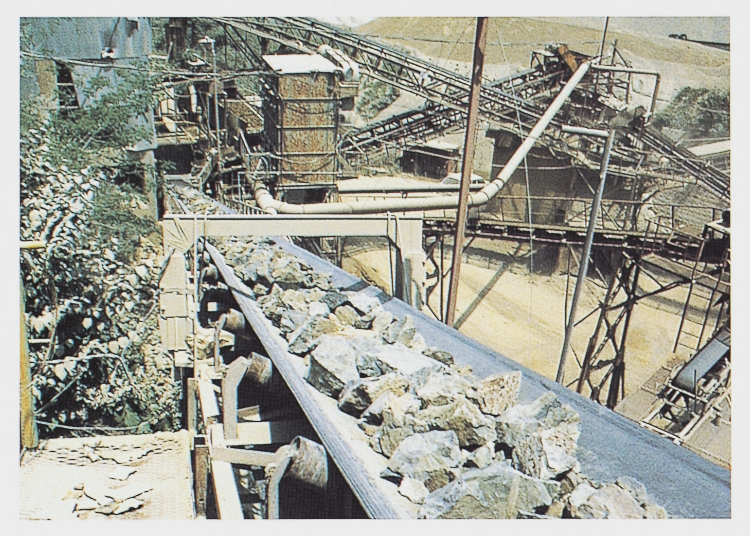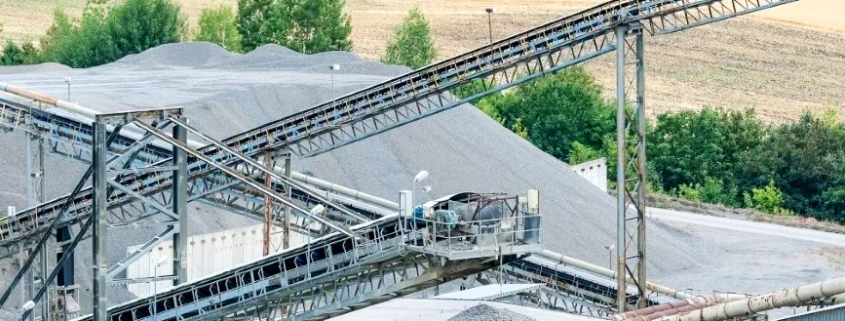Conveyor Belt Rubber Bunnings 50 x 1.5mm x 5m Black Roll
Discover the versatile range of conveyor belt rubber Bunnings provides, catering to a spectrum of requirements for both amateur and expert builders. Our article takes you through the essentials of sturdy conveyor belt rubber, ideal for various demanding projects with an emphasis on the different thicknesses available, from robust 12mm down to a more subtle 2mm thickness. We touch upon each thickness’s unique roles and introduce neoprene’s unique properties, showcasing Bunnings’ commitment to quality and variety. Whether heavy-duty tasks or precise, delicate applications, the guide unravels how Bunnings’ conveyor belt rubber can elevate your project, offering insights into their practical usage, from the malleable rubber sheets to the dynamic rubber strips. This resource aims to equip you with the knowledge to make an informed choice from Bunnings’ impressive selection, ensuring your next project benefits from the reliability and adaptability of conveyor belt rubber.
Exploring Conveyor Belt Rubber Bunnings: A Comprehensive Guide
Conveyor belt rubber is a versatile, durable material utilized in various applications, from industrial machinery to household DIY projects. Typically made from rubber or a rubber composite, conveyor belts are designed to facilitate the easy and efficient movement of goods, parts, or materials across a designated area. These belts are essential in numerous sectors including manufacturing, retail, and shipping, playing a critical role in the automation of processes and increasing operational efficiency.
Rubber belt Bunnings, renowned as a leading retailer in home improvement and outdoor living products in Australia, offers an extensive range of conveyor belt rubber solutions. Catering to the diverse needs of its customers, Bunnings provides high-quality rubber strip bunnings options suitable for both professional tradespeople and weekend DIY enthusiasts. Whether you’re looking to automate part of your workshop, create a custom conveyor for a home project, or need a durable rubber solution for any other application, Bunnings’ assortment of conveyor belt rubber is designed to meet a wide array of requirements.
In navigating the extensive inventory of conveyor rollers Bunnings offers, customers will find products that boast durability, flexibility, and the ability to withstand various environmental conditions. This selection underscores Bunnings’ commitment to supplying professional-grade materials to the public, enabling customers to execute projects with confidence, knowing they have sourced their materials from one of Australia’s most trusted home improvement retailers. Through its offering of black rubber conveyor belt, level master Bunnings demonstrates its ongoing dedication to facilitating innovation, efficiency, and creativity among its clientele.

Bunnings: High-Quality Conveyor Belt Rubber
Bunnings Warehouse is a renowned name in the home improvement and outdoor living products market in Australia and New Zealand, offering a broad array of products to both retail and commercial customers. Among its vast product lineup, Thick rubber Bunnings also caters to industrial needs, including the provision of conveyor belt rubber—a critical component in the maneuvering and processing industries. Their conveyor belt rubber selection is designed to support varied operational requirements, offering durability, flexibility, and reliability in material handling processes. Ideal for businesses seeking efficient and effective solutions for their conveyor systems, Bunnings’ conveyor belt rubber is crafted to meet high standards of quality and performance. This service not only highlights Bunnings’ commitment to catering to a wide market, including industrial and commercial sectors, but also their role in facilitating the smooth operation of businesses that rely on robust material handling solutions.
Moroday 50 x 1.5mm x 5m Black Insertion Rubber Roll
Features
- Highly Durable
- High grade Rubber
- Cost effective
Moroday’s Nitrile range is perfect for general gasketing and sealing applications and is specifically designed for grease-oil heavy areas. It can resist both organic and synthetic oils and is durable enough to maintain its integrity and resistance qualities for prolonged use.
Moroday 200 x 1.5mm x 2m Black Insertion Rubber Roll
Features
- Highly Durable
- High grade Rubber
- Cost effective
Moroday’s Nitrile range is perfect for general gasketing and sealing applications and is specifically designed for grease-oil heavy areas. It can resist both organic and synthetic oils and is durable enough to maintain its integrity and resistance qualities for prolonged use.
Ideal 1m Black Flat Surface Rubber Matting Sheet
Features
- Flat easy clean surface patterning running the full width and length of the roll
- 100cm wide and the desired length can be cut from the roll
- Provides a grip surface in dry or damp conditions
- Functional black colouring
- Can be laid over timber, laminate, ceramic, stone and concrete floors
This SBR rubber matting with a flat surface provides a roll-out protective grip surface suitable for use over smooth and flat subfloors. The mattings total thickness is 3.0mm +/-. The rolls are 100cm wide and when new are 10m in length and 48kg +/- in weight.
It is suitable for many domestic and recreational applications including bench tops, work shops, walkways, home gyms, vans, shelves and trays. It comes with a two year domestic warranty.
Two part expoxy adhesive is recommended for full stick installations.
Ultimate Flooring Multi Purpose Rubber Mat
Features
- Simple installation
- Protects floor from damage
- Provides a safe work surface
- Proudly Australian made using quality aussie tyres
The Ultimate Flooring Multi Purpose Rubber Mat is an Australian made product and an extremely versatile flooring solution for your home, shed or garage. With its non slip properties it will transform, protect and give your floors a fresh new look for many years.
Maximizing Projects with Heavy-Duty Conveyor Belt Rubber Bunnings
When it comes to undertaking intensive tasks, the heavy-duty conveyor belt rubber Bunnings provides is unmatched in resilience and adaptability. This kind of conveyor belt rubber is engineered for endurance and can withstand the demanding conditions of industrial environments, heavy loading tasks, and prolonged operation. The heavy-duty aspect refers to the rubber’s enhanced conveyor belt tensile strength, resistance to abrasion, and ability to handle significant weight without compromise.
Bunnings’ selection of heavy-duty conveyor belt rubber is tailored for applications that require robust performance. For instance, in the mining sector, these conveyor belt transportation large quantities of materials over considerable distances without succumbing to the extreme wear and tear of moving rough, sharp-edged minerals. Likewise, in the agricultural industry, heavy-duty conveyor belt rubber Bunnings offers can facilitate the efficient movement of grains and other products, sustaining the rigors of outdoor elements and varied temperature conditions.
However, the application of heavy-duty conveyor belt rubber is not limited to industrial uses alone. Creative DIY projects can equally benefit from the rugged nature of these materials. From crafting outdoor walkways that can endure heavy foot traffic to constructing durable workbenches resilient to workshop activities, the heavy-duty rubber blocks Bunnings showcases offers a broad spectrum of possibilities.
Moreover, Bunnings understands that durability is just as important as versatility. Therefore, the heavy-duty conveyor belt rubber Bunnings supplies comes with the assurance of long-term serviceability, ensuring that projects remain cost-effective over time. This reduced need for frequent replacements provides peace of mind for those investing in projects that hinge on the longevity and reliability of their materials. Whether for professional building or home-based innovation, heavy-duty conveyor belt rubber from Bunnings stands as a cornerstone for projects demanding the highest degree of durability.
Conveyor Belt Rubber Bunnings Varieties: Thick to Thin Range
Conveyor belt rubber is a vital component in various industrial, commercial, and creative applications. Bunnings, a prominent hardware and home improvement retail chain, offers a wide array of conveyor belt rubber types, featuring varying thicknesses to cater to different needs. Understanding the differences and applications of these conveyor belt rubber bunnings options can significantly impact project outcomes, be it in durability, flexibility, or suitability for specific tasks.

Thick Options: 12mm and 10mm Conveyor Belt Rubber at Bunnings
At the thicker end of the spectrum, solid rubber blocks Bunnings offers robust conveyor belt rubber varieties in 12mm and 10mm thicknesses. These thick rubbers are designed for heavy-duty applications, providing substantial durability and resistance against wear and tear.
12mm
The 12mm variant, being the thickest option available, is particularly valued in industrial rubber conveyor belt encounter harsh conditions, including extreme abrasion, weighty loads, and the need for high-impact resistance.
10mm
The slightly thinner 10mm rubber maintains a balance between toughness and flexibility, making it suitable for a broad range of industrial applications where durability is crucial, yet some degree of flexibility is beneficial.
6mm
The 6mm insertion rubber available at Bunnings stands out for its adaptability and applications that extend beyond conventional conveyor belt scenarios. This thinner rubber is reinforced with fabric, making it strong despite its reduced thickness. It is an excellent choice for sealing, insulation, and protective layers in various settings. Its applications can range from workshop lining, protecting surfaces from impact and abrasion to makeshift gaskets and weather stripping. The enhanced flexibility enables it to conform to irregular shapes, making it an invaluable resource in maintenance and repair tasks across industries.
Conveyor belt rubber bunnings present a spectrum of thicknesses catered to diverse needs and applications. From the heaviest duty 12mm thick rubber to the versatile 6mm insertion rubber, the selection available accommodates projects of all sizes and complexities. Understanding the specific properties and potential uses of each thickness can significantly contribute to the effectiveness and efficiency of industrial operations, creative projects, and maintenance tasks alike.
Thickness for Purpose: Applications of Different Thicknesses
The selection of conveyor belt rubber thickness is critical to project success. Thick belts, such as the 12mm and 10mm varieties from Bunnings, are generally employed in settings that require utmost resilience and life span. These might include mining operations, recycling plants, and heavy manufacturing. The thickness of these conveyor belts provides a superior level of protection against sharp objects, heavy loads, and rough materials that could easily slice or wear down thinner belts.
Conversely, thinner conveyor belt rubbers, stepping down to 6mm, offer a greater degree of flexibility and are often used where intricate shapes, tighter turns, or specific adjustments are necessary. The choice between thicknesses should consider factors such as the weight of materials being transported, the environment (outdoor or indoor, exposure to chemicals, etc.), and the speed and direction of the belt’s movement.
1. Light-Duty Applications (3-5 mm Thickness)
- Material Handling in Warehouses:
- Conveyor belts with a rubber thickness of 3-5 mm are typically used in light-duty applications such as material handling in warehouses and distribution centers. These belts are ideal for transporting small to medium-sized packages, boxes, and other items.
- Benefits:
- Lightweight and flexible, making them easy to install and maintain.
- Cost-effective for operations that do not involve heavy or abrasive materials.
- Food Processing:
- In food processing industries, thinner conveyor belts (around 3-4 mm) are used for transporting food products. These belts are designed to be hygienic and easy to clean, often made from food-grade materials.
- Benefits:
- Ensures food safety and compliance with health regulations.
- Easy to clean and sanitize, reducing contamination risks.
2. Medium-Duty Applications (6-8 mm Thickness)
- Agricultural Use:
- Conveyor belts with a rubber thickness of 6-8 mm are commonly used in agricultural settings for tasks such as transporting grains, seeds, and other agricultural products. These belts can handle a moderate amount of wear and tear.
- Benefits:
- Provides a good balance between durability and flexibility.
- Resistant to moderate impacts and abrasions.
- Packaging and Assembly Lines:
- In packaging and assembly lines, medium-thickness belts are used to transport goods through various stages of production and packaging. These belts need to be durable enough to handle frequent use and occasional impacts.
- Benefits:
- Durable enough to withstand the demands of industrial production lines.
- Offers a longer lifespan compared to thinner belts.
3. Heavy-Duty Applications (10-12 mm Thickness)
- Mining and Quarrying:
- For heavy-duty applications such as mining and quarrying, conveyor belts with a rubber thickness of 10-12 mm are used. These belts are designed to transport heavy and abrasive materials like rocks, ores, and minerals.
- Benefits:
- Highly resistant to abrasion, cuts, and punctures, ensuring longevity in harsh environments.
- Capable of handling heavy loads without significant wear.
- Construction and Demolition:
- In construction and demolition sites, thick conveyor belts are used to move rubble, concrete, and other heavy debris. The robust construction of these belts helps them withstand the demanding conditions of such environments.
- Benefits:
- Provides exceptional durability and load-bearing capacity.
- Reduces the risk of belt failure under heavy and continuous use.
By selecting the appropriate thickness for the specific application, industries can optimize the performance and longevity of their conveyor belts, ensuring efficient and reliable material handling.
Conveyor Belt Rubber Bunnings: Versatility of Rubber Materials and Their Applications
Delving into the assortment at Bunnings uncovers a comprehensive selection of conveyor belt rubber bunnings materials, aimed at serving a broad spectrum of industrial, mechanical, and artistic needs. Neoprene rubber, in particular, is notable for its exceptional qualities and adaptability, in addition to the thick varieties and rubber blocks that fulfill a wide range of practical and imaginative functions. This thorough examination highlights the features, benefits, and potential uses of these materials, showcasing their vital importance in various industries.

Neoprene Rubber
Neoprene rubber, a synthetic polymer resembling rubber, is well-regarded for its resilience, durability, and versatility. Characterized by its excellent chemical stability and ability to maintain flexibility over a wide temperature range, neoprene is an ideal material for applications requiring weathering and water resistance. Available through conveyor belt rubber bunnings, this material’s superior qualities make it suitable for seals, gaskets, and hoses in automotive, marine, and construction industries. Neoprene’s resistance to degradation from sun, ozone, and weather significantly extends the lifespan of products made from this material, underscoring its immense utility in environments where durability is paramount.
The Versatility of Thick Rubber
Bunnings offers a spectrum of thick rubber materials, which are indispensable in scenarios demanding robustness and endurance. These thick rubber varieties are employed in protective coverings for machinery, anti-vibration mats in industrial settings, and even soundproofing applications. The remarkable attribute of these thick rubbers is their capacity to absorb shocks and resist tears, which is crucial in heavy-duty environments. Moreover, thick rubber from Bunnings can be cut and customized to fit various surfaces and equipment, offering a practical solution to countless mechanical and industrial challenges. Its versatility is showcased in its application across multiple domains, from manufacturing floors to DIY projects requiring a durable, adaptable material.
Bunnings Rubber Blocks in Action
Rubber blocks available at Bunnings prove their worth in a variety of application scenarios, demonstrating incredible diversity in utility. These blocks, known for their high-density and robust nature, are often employed in mounting applications to reduce vibration and noise. They find their place under heavy machinery to prevent slippage and protect floor surfaces, as well as in the automotive industry for chassis and bodywork protection during maintenance and repair. Additionally, creative applications abound, from the construction of custom stamps for art projects to the use as resilient bases for sculptural pieces. The rubber block serves as a testament to the wide range of utilities that conveyor belt rubber bunnings materials can provide, adhering to needs from the functional and protective to the artistic.
Conveyor belt rubber bunnings materials, including neoprene rubber, thick rubber varieties, and rubber blocks, are integral to a vast array of applications spanning industrial, mechanical, and creative fields. Each material offers unique properties and benefits, whether it’s neoprene’s resistance qualities, the protective and absorptive nature of thick rubber, or the versatile and durable rubber blocks. This wide range of rubber materials and their uses underscores the adaptability and essential role of these components in facilitating operations, enhancing safety, and sparking creativity across sectors.
Discovering the Versatility of 3mm and 2mm Rubber Sheets at Conveyor Belt Rubber Bunnings
At Bunnings, one can find an array of conveyor belt rubber bunnings materials that are tailored for various applications and requirements. Among these options are the 3mm and the 2mm rubber sheets, each with unique properties that make them suitable for specific jobs. These thinner gauges of rubber sheets are ideal for applications requiring a delicate balance between flexibility and strength. From DIY home projects to more demanding industrial tasks, these slim yet sturdy materials offer reliability and versatility.
Versatility of 3mm Rubber Sheets
The 3mm rubber sheets available through conveyor belt rubber bunnings play a crucial role where a moderate level of durability is needed without compromising flexibility. This makes them a preferred choice for weather seals in windows and doors or waterproofing applications in roofing projects due to their capacity to provide a solid seal and resistance to water ingress. In the realm of industrial use, these 3mm sheets can act as protective linings for equipment or machinery that require a buffer zone, which guards against abrasions and minor impacts. Additionally, creative uses include crafting custom-made gaskets, washers, and as a base for mounting delicate equipment, where a thin yet resilient layer is required to cushion against vibrations.

Versatility of 2mm Rubber Sheets
The slightly thinner 2mm rubber sheets provided as part of the conveyor belt rubber bunnings lineup are exceptionally versatile. Their reduced thickness makes them highly pliable, which is invaluable in scenarios that involve wrapping or molding around intricate shapes – such as pipes and fittings in plumbing or intricate parts within automotive interiors. Despite their pliability, these sheets do not forgo strength; they can serve as insulating layers in electrical applications, provide soundproofing qualities in recording studios or music rooms, and add a protective barrier against scrapes across various surfaces. For homemakers and hobbyists, these 2mm sheets are perfect for creating unique, flexible seals, or as an underlay in crafting projects, offering a combination of practicality and finesse.

Exploring Other Offerings in the Conveyor Belt Rubber Bunnings Selection
Beyond the traditional conveyor belt rubber Bunnings stocks, an intriguing choice such as the Bunnings rubber strip highlights the retailer’s dedication to offering a wide range of adaptable and functional rubber-based solutions. As a testament to versatility, these products further enhance the selection, drawing more users to find the perfect fit for various needs.
Bunnings rubber strips are narrow, long pieces of rubber used in a myriad of applications. They bring the inherent properties of durability, resilience, and flexibility of rubber to contexts that require sleek, compact solutions. From industrial settings to residential projects, these rubber strips find their way into multiple scenarios.
In industrial settings, users commonly employ rubber strips for sealing, insulating, and shock absorption applications. They are perfect for creating custom gaskets and seals that cater to complex components and irregular shapes, ensuring leak-proof and airtight enclosures. Additionally, given their excellent insulating properties, these strips can be used in electrical applications to prevent the leakage of current and provide extra safety.
In residential projects, the role of the Bunnings rubber strip diversifies even further. Homeowners can employ this product as draught stoppers that fit beneath doors and windows, maintaining an optimum temperature inside the house. DIY enthusiasts can use these strips in making slip-resistant pads for household items or buffers to protect furniture and appliances.
Moreover, the adaptability of these rubber strips extends them to fitness and sports applications as well. They can be used as grip enhancers for sports equipment, bench press bars, and even yoga mats. Depending on the user’s needs, Bunnings rubber strips can be cut, layered, or modified to provide the perfect customization level.
As an addition to the selection of conveyor belt rubber Bunnings provides, Bunnings rubber strips ultimately combine adaptability and functionality across a broad range of applications. Their versatility is a prime example of how Bunnings continues to cater to users’ various project requirements, ensuring a well-rounded, comprehensive range of rubber-based products for every need. This diversity solidifies Bunnings’ place as a go-to location for anyone seeking quality, customizable solutions in rubber materials.
FAQs about Conveyor Belt Rubber Bunnings
The type of rubber used on conveyor belts primarily depends on the application and the environmental conditions in which the belt will operate. The most commonly utilized rubbers are Natural Rubber (NR), Styrene-Butadiene Rubber (SBR), and Neoprene. Natural Rubber is prized for its elasticity and tensile strength, making it suitable for general-purpose belts in mining and milling operations. SBR is more resistant to abrasion than Natural Rubber and is often used in handling of materials like coal, while Neoprene is recognized for its ability to withstand a wide range of temperatures, oil, and chemicals, making it ideal for use in harsher environments such as in the chemical industry or in outdoor applications. Each rubber type presents a unique set of properties that cater to specific durability, flexibility, and resistance requirements.
Making a rubber conveyor belt involves several key processes, starting with the compounding of rubber to achieve the desired properties. This is followed by mixing, where various additives and fillers are blended with the rubber to enhance its physical properties. The next step is calendaring, where the rubber is formed into layers and combined with reinforcing materials like fabric or steel cords, depending on the belt’s required strength and tension capabilities. Following calendaring, the layers are pressed and vulcanized under heat and pressure to cure the rubber, bonding the layers and giving the belt its final strength and shape. The belt may then be cut to specific widths and lengths and equipped with edges or cleats if required. Quality control is a vital last step, ensuring the belt meets all the necessary specifications and standards for its intended use.
The technical specifications for rubber conveyor belts can vary widely depending on their intended application, but they generally include parameters such as belt width, thickness, tensile strength, cover grade, and abrasion resistance. Tensile strength reflects the maximum load the belt can handle, while the cover grade relates to the rubber’s resistance to wear, tears, and environmental conditions like oil, heat, or chemicals. Abrasion resistance is critical for belts in material handling applications to ensure longevity. Other specifications might include flexibility, which affects the minimum pulley diameter the belt can wrap around without damaging, and thermal resistance for high-temperature applications. Manufacturers may also specify the type of reinforcement used (e.g., fabric, steel cord) and the belt’s speed capacity. Ensuring adherence to these specifications is crucial for optimal performance and durability of the conveyor belt in its specific operational context.
Conveyor belts can be made from a variety of materials, each selected based on the specific demands of the environment and the materials being transported. Rubber, both natural and synthetic, is one of the most common materials due to its flexibility, durability, and resistance to wear and tear. For applications requiring high strength and durability, steel conveyor belts are used, especially in industries like mining. Plastic belts, made from materials such as PVC or PU, offer a lightweight and corrosion-resistant option, often used in food processing or pharmaceutical industries. For higher temperature applications, silicone or Teflon may be used. Fabric belts, made from materials such as cotton, nylon, or polyester, are often used for lighter applications like packaging. Each material offers distinct advantages and limitations, so the selection usually depends on the balance between cost, application requirements, and operational conditions.
Rubber insertion is a process that incorporates a layer of fabric, often cotton or nylon, within rubber sheets or components to reinforce the material and enhance its physical properties. This technique is widely used in the manufacturing of items that demand increased strength, stability, and resistance to tearing and puncturing. By embedding a fabric layer, the rubber’s tensile strength is significantly improved, allowing the resulting composite material to withstand higher pressures and stresses. Such reinforced rubber materials find applications across various industries, including automotive, for gaskets, seals and belts; construction, as water or weatherproofing layers; and in the production of heavy-duty equipment where flexible yet durable materials are necessary. Some specific products include conveyor belts, hoses, bridge bearing pads, and anti-vibration mounts. The insertion adds durability without compromising the inherent elasticity of the rubber, making it an ideal choice for products that must endure dynamic stresses and harsh environmental conditions.
Jordan Smith, a seasoned professional with over 20 years of experience in the conveyor system industry. Jordan’s expertise lies in providing comprehensive solutions for conveyor rollers, belts, and accessories, catering to a wide range of industrial needs. From initial design and configuration to installation and meticulous troubleshooting, Jordan is adept at handling all aspects of conveyor system management. Whether you’re looking to upgrade your production line with efficient conveyor belts, require custom conveyor rollers for specific operations, or need expert advice on selecting the right conveyor accessories for your facility, Jordan is your reliable consultant. For any inquiries or assistance with conveyor system optimization, Jordan is available to share his wealth of knowledge and experience. Feel free to reach out at any time for professional guidance on all matters related to conveyor rollers, belts, and accessories.



